|
Bali is an Indonesian island located in the westernmost end of the Lesser Sunda Islands, lying between Java to the west and Lombok to the east. It is one of the country's 33 provinces with the provincial capital at Denpasar towards the south of the island. The province covers a few small neighbouring islands as well as the isle of Bali. With a population recorded as 3,891,428 in the 2010 census, the island is home to most of Indonesia's Hindu minority. In the 2000 census about 92.29% of Bali's population adhered to Balinese Hinduism while most of the remainder follow Islam. It is also the largest tourist destination in the country and is renowned for its highly developed arts, including traditional and modern dance, sculpture, painting, leather, metalworking, and music. Bali, a tourist haven for decades, has seen a further surge in tourist numbers in recent years. Source: References:
0 Comments
The Sports of Cockfighting in Afghanistan became legal again after the Taliban were removed from power during the "war on terrorism". Afghanistan i/æfˈɡænɨstæn/ (Persian/Pashto: افغانستان, Afġānistān), officially the Islamic Republic of Afghanistan, is a landlocked country located in the centre of Asia, forming part of South Asia, Central Asia, and Greater Middle East, it is also considered to be part of a broader West Asia. With a population of about 29 million, it has an area of 647,500 km2 (250,001 sq mi), making it the 42nd most populous and 41st largest nation in the world. It is bordered by Pakistan in the south and the east, Iran in the west, Turkmenistan, Uzbekistan and Tajikistan in the north, and China in the far northeast. Afghanistan has been an ancient focal point of the Silk Road and human migration. Archaeologists have found evidence of human habitation from as far back as 50,000 BC. Urban civilization may have begun in the area as early as 3,000 to 2,000 BC. Sitting at an important geostrategic location that connects the Middle East with Central Asia and the Indian subcontinent, the land has been home to various peoples through the ages and witnessed many military campaigns, notably by Alexander the Great, Genghis Khan, and in modern era Western forces. The land also served as a source from which the Greco-Bactrians, Kushans, Saffarids, Ghaznavids, Ghorids, Timurids, Mughals and many others have risen to form major empires. The political history of the modern state of Afghanistan begins in 1709 with the rise of the Pashtuns, when the Hotaki dynasty was established in Kandahar followed by Ahmad Shah Durrani's rise to power in 1747. In the late 19th century, Afghanistan became a buffer state in the "Great Game" between the British and Russian empires. Following the Third Anglo-Afghan War of 1919 and the signing of the Treaty of Rawalpindi, King Amanullah started modernization of the country. During the Cold War, after the withdrawal of the British from neighboring India in 1947, the United States and the Soviet Union began spreading their influence in Afghanistan. Between 1979 and 1989, the country experienced a major war between the US-backed mujahideen forces and the Soviet-backed Afghan government in which over a million Afghans lost their lives mainly due to land-mines. This was followed by the 1990s Afghan civil war, the rise and fall of the extremist Taliban government and the 2001-present war. In December 2001, the United Nations Security Council authorized the creation of the International Security Assistance Force (ISAF) to help maintain security in Afghanistan and assist the Karzai administration. The decades of war made Afghanistan the world's most dangerous country, including the largest producer of refugees and asylum seekers. While the international community is rebuilding war-torn Afghanistan, terrorist groups such as the Haqqani Network and Hezbi Islami are actively involved in a nationwide Taliban-led insurgency, which includes hundreds of assassinations and suicide attacks. According to the United Nations, the insurgents were responsible for 75% of civilian casualties in 2010 and 80% in 2011. Source: The Democratic Republic of Timor-Leste (tiˈmɔr ˈlɛʃteɪ), commonly known as East Timor i/ˌiːst ˈtiːmɔr/ (Tetum: Timór Lorosa'e, Portuguese: Timor-Leste), is a sovereign state in Southeast Asia. It comprises the eastern half of the island of Timor, the nearby islands of Atauro and Jaco, and Oecusse, an exclave on the northwestern side of the island, within Indonesian West Timor. The small country of 15,410 km² (5,400 sq mi) is located about 640 km (400 mi) northwest of Darwin, Australia. East Timor was colonized by Portugal in the 16th century, and was known as Portuguese Timor until Portugal's decolonization of the country. In late 1975, East Timor declared its independence, but later that year was invaded and occupied by Indonesia and was declared Indonesia's 27th province the following year. In 1999, following the United Nations-sponsored act of self-determination, Indonesia relinquished control of the territory and East Timor became the first new sovereign state of the 21st century on May 20, 2002. East Timor is one of only two predominantly Roman Catholic countries in Asia, the other being the Philippines. East Timor has a lower-middle-income economy. It continues to suffer the aftereffects of a decades-long independence struggle against Indonesia, which damaged infrastructure and displaced thousands of civilians. It is placed 147th by Human Development Index (HDI). Source: The Timing of Major Embryonic Developments Before Egg Laying Fertilization Division and growth of living cells Segregation of cells into groups of special function (gastrulation) Between Laying and Incubation Virtually no growth. Stage of inactive embryonic life During Incubation Day 1 Development of area pellucida and area opaca of blastoderm. Major developments visible under microscope: 18 hours, appearance of alimentary tract 19 hours, beginning of brain crease 20 hours, appearance of vertebral column 21 hours, beginning of formation of brain and nervous system 22 hours, beginning of formation of head 23 hours, appearance of blood islands 24 hours, beginning of formation of eyes Day 2 Embryo begins to turn on left side. Blood vessels appear in the yolk sac. Major developments visible under microscope: 25 hours, beginning of formation of veins and heart 30 hours, second, third and fourth vesicles of brain clearly defined, as is heart, which now starts to beat 35 hours, beginning of formation of ear pits 36 hours, first sign of amnion 46 hours, formation of throat Day 3 Formation of nose, wings, legs, and allantois begins. Amnion completely surrounds embryo. Day 4 Formation of tongue begins. Embryo completely separate from yolk sac and turned on left side. Allantois breaks through amnion. Day 5 Proventriculus and gizzard formed. Formation of reproductive organs and sex determined. Day 6 Formation of beak and egg-tooth begins. Main division of legs and wings. Voluntary movement begins. Day 7 Indications of digits in legs and wings are visible. Abdomen more prominent due to development of viscera. Day 8 Formation of feathers begins. Day 9 Embryo begins to look bird-like. Mouth opening appears. Day 10 Beak starts to harden. Skin pores visible to naked eye. Digits completely separated. Day 12 Toes fully formed. First feathers appear. Day 13 Scales and claws appear. Body fairly well covered with feathers. Day 14 Embryo turns its head towards blunt end of egg. Day 15 Small intestines taken into body. Day 16 Scales, claws and beak becoming firm and horny. Embryo fully covered with feathers. Albumen nearly gone and yolk increasingly important as nutrient. Day 17 Beak turns toward air cell, amniotic fluid decreases, and embryo begins preparation for hatching. Day 18 Growth of embryo nearly complete. Day 19 Yolk sac draws into body cavity through umbilicus. Embryo occupies most of space within egg except air cell. Day 20 Yolk sac completely drawn into body cavity. Embryo becomes chick, breaks amnion, starts breathing air in air cell Allantois ceases to function and starts to dry up. Day 21 Chick hatches! Source: SHELL Bumpy and grainy in texture, an eggshell is covered with as many as 17,000 tiny pores. Eggshell is made almost entirely of calcium carbonate (CaCO3) crystals. It is a semipermeable membrane, which means that air and moisture can pass through its pores. The shell also has a thin outermost coating called the bloom or cuticle that helps keep out bacteria and dust. INNER AND OUTER MEMBRANES Lying between the eggshell and egg white, these two transparent protein membranes provide efficient defense against bacterial invasion. If you give these layers a tug, you’ll find they’re surprisingly strong. They’re made partly of keratin, a protein that’s also in human hair.AIR CELLAn air space forms when the contents of the egg cool and contract after the egg is laid. The air cell usually rests between the outer and inner membranes at the egg’s larger end, and it accounts for the crater you often see at the end of a hard-cooked egg. The air cell grows larger as an egg ages. ALBUMEN The egg white is known as the albumen, which comes from albus, the Latin word for “white.” Four alternating layers of thick and thin albumen contain approximately 40 different proteins, the main components of the egg white in addition to water. CHALAZAE Opaque ropes of egg white, the chalazae hold the yolk in the center of the egg. Like little anchors, they attach the yolk’s casing to the membrane lining the eggshell. The more prominent they are, the fresher the egg. VITELLINE MEMBRANE The clear casing that encloses the yolk. YOLK The yolk contains less water and more protein than the white, some fat, and most of the vitamins and minerals of the egg. These include iron, vitamin A, vitamin D, phosphorus, calcium, thiamine, and riboflavin. The yolk is also a source of lecithin, an effective emulsifier. Yolk color ranges from just a hint of yellow to a magnificent deep orange, according to the feed and breed of the hen. EGG CELL This part would develop into a baby chick if it were to be fertilized. AIR POCKET The air pocket grows as water is released. The smaller the air pocket, the fresher the egg. References:
References:
Junglefowl are the four living species of bird from the genus Gallus in the Gallinaceous bird order, which occur in India, Sri Lanka, Southeast Asia and Indonesia. These are large birds, with colourful male plumage, but are nevertheless difficult to see in the dense vegetation they inhabit. As with many birds in the pheasant family, the male takes no part in the incubation of the egg or rearing of the precocial young. These duties are performed by the drab and well-camouflaged female. The junglefowl are seed-eaters, but insects are also taken, particularly by the young birds. One of the species in this genus, the Red Junglefowl, is of historical importance as the likely ancestor of the domesticated chicken, although it has been suggested the Grey Junglefowl was also involved. The Sri Lanka Junglefowl is the National Bird of Sri Lanka. Species
Archaeopteryx ( /ˌɑrkiːˈɒptərɨks/ ar-kee-op-tər-iks), sometimes referred to by its German name Urvogel ("original bird" or "first bird"), is a genus of theropod dinosaur that is closely related to birds. The name derives from the Ancient Greek ἀρχαῖος (archaīos) meaning "ancient", and πτέρυξ (ptéryx), meaning "feather" or "wing". Since the late 19th century, it has been generally accepted by palaeontologists, and celebrated in lay reference works, as being the oldest known bird, though some more recent studies have cast doubt on this assessment, finding that it might instead be a non-avialan dinosaur closely related to the origin of birds. Archaeopteryx lived in the Late Jurassic Period around 150 million years ago, in what is now southern Germany during a time when Europe was an archipelago of islands in a shallow warm tropical sea, much closer to the equator than it is now. Similar in shape to a European Magpie, with the largest individuals possibly attaining the size of a raven, Archaeopteryx could grow to about 0.5 metres (1.6 ft) in length. Despite its small size, broad wings, and inferred ability to fly or glide, Archaeopteryx has more in common with other small Mesozoic dinosaurs than it does with modern birds. In particular, it shares the following features with the deinonychosaurs (dromaeosaurs and troodontids): jaws with sharp teeth, three fingers with claws, a long bony tail, hyperextensible second toes ("killing claw"), feathers (which also suggest homeothermy), and various skeletal features. The features above make Archaeopteryx a clear candidate for a transitional fossil between dinosaurs and birds. Thus, Archaeopteryx plays an important role not only in the study of the origin of birds but in the study of dinosaurs. It was named from a feather in 1861. That same year, the first complete specimen of Archaeopteryx was announced. Over the years, ten more fossils of Archaeopteryx have surfaced. Despite variation among these fossils, most experts regard all the remains that have been discovered as belonging to a single species, though this is still debated. Most of these eleven fossils include impressions of feathers—among the oldest direct evidence of such structures. Moreover, because these feathers are of an advanced form (flight feathers), these fossils are evidence that the evolution of feathers began before the Late Jurassic. The type specimen of Archaeopteryx was discovered just two years after Charles Darwin published On the Origin of Species. Archaeopteryx seemed to confirm Darwin's theories and has since become a key piece of evidence for the origin of birds, the transitional fossils debate, and confirmation of evolution. Source: http://en.wikipedia.org/wiki/Archaeopteryx Direct Link to Photo Museum by United Nations of Cockfighting
http://imacockfighter.bittergame.com/unofc-photo-museum.html |
|

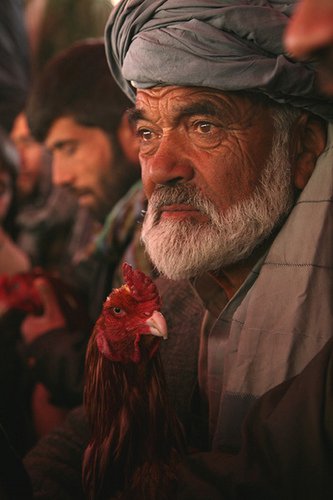
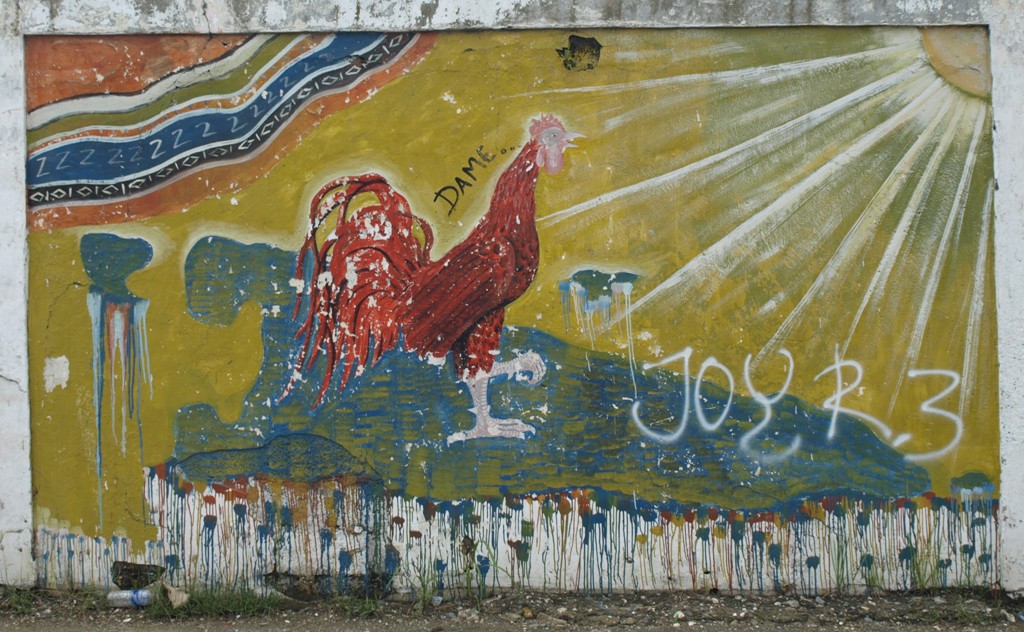
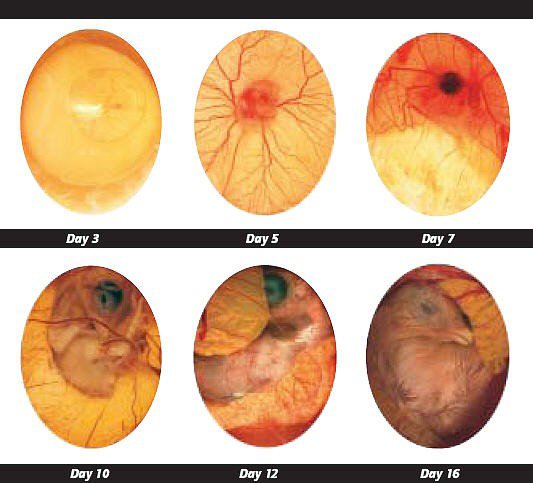
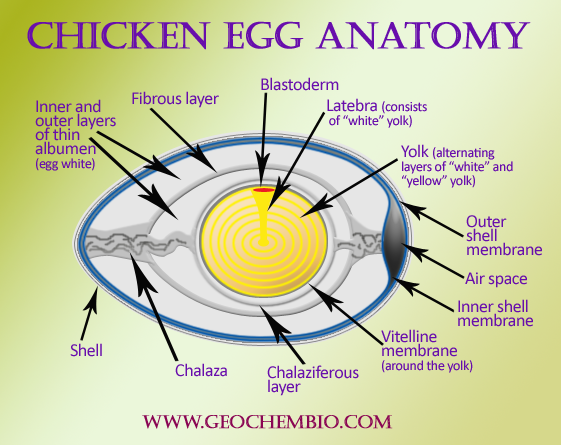
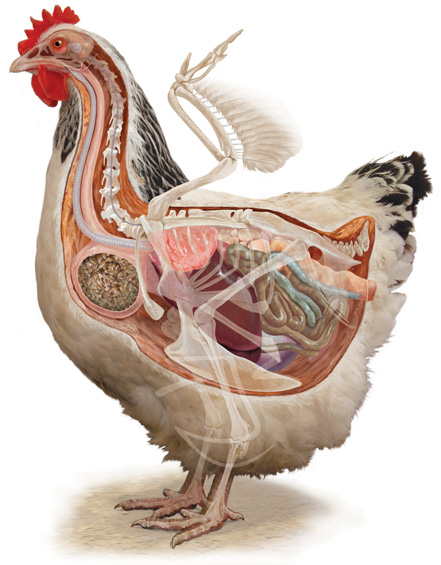
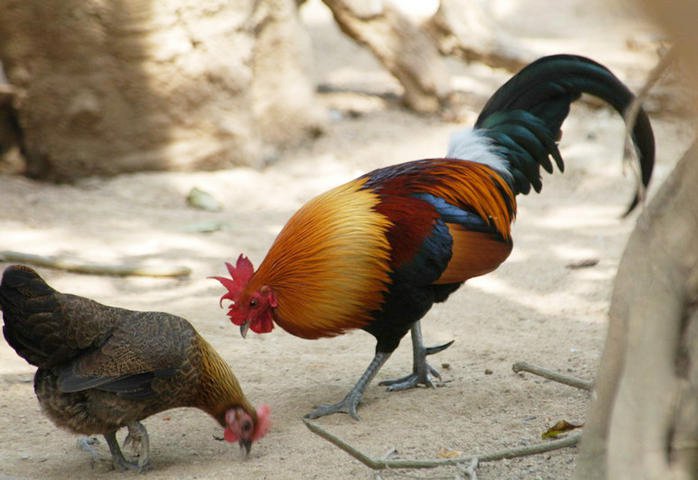
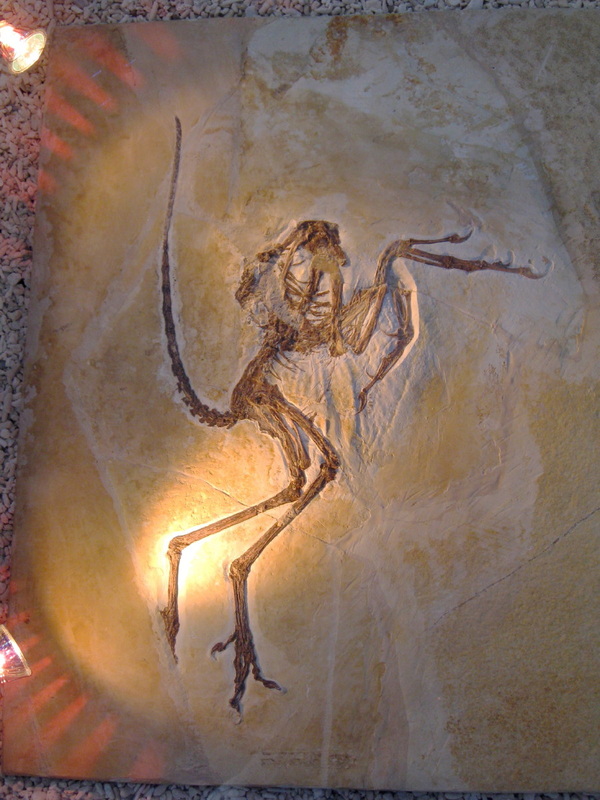

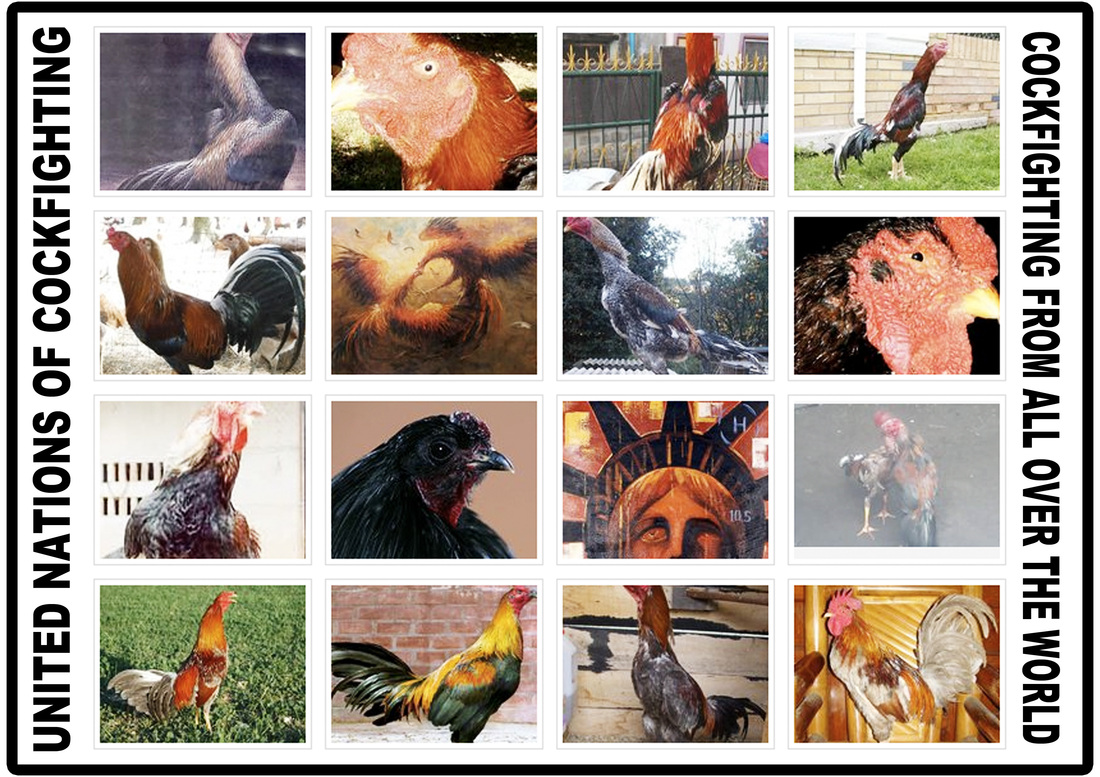
 RSS Feed
RSS Feed
